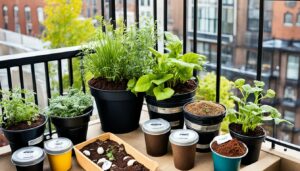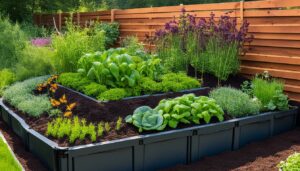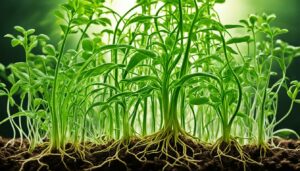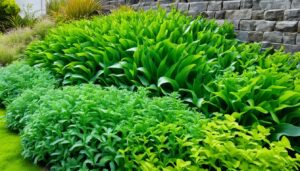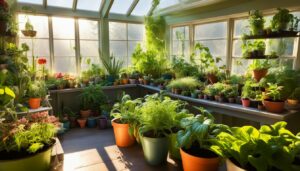Gardening doesn’t have to retreat indoors as the first frost sets in. Cold frame gardening offers a sheltered retreat for your plants, allowing you to defy the seasons and extend the growing season far beyond the conventional calendar. Conventional wisdom may deem winter a time for barren plots, but could a simple structure be the key to a year-round harvest? Unlock the potential of winter vegetable gardening with the power of protected cultivation, fostering resilience against the cold’s embrace.
Think of cold frames as miniature guardians, preserving and nurturing your green haven. This primeval method of frost protection for plants has evolved into an accessible and efficient tool for today’s gardening enthusiasts. Picture a low-tech glasshouse, storing the sun’s radiance even during the grimmest winter months, keeping those tender leaves safe and sound. In this revelation of sustainability, find out how repurposing and constructing these protective enclosures can prolong your connection with the soil before the spring sun thaw.
Key Takeaways
- Utilize cold frames to harness solar energy for a warmer microclimate.
- Protect and prolong the cultivation of cold-hardy vegetables.
- Create a simple, yet effective barrier against winter’s chill.
- Transform common materials into a powerful tool for extending the growing season.
- Experience the yield-boosting benefits of protected cultivation.
- Discover the versatility and simplicity of cold frame construction.
An Introduction to Cold Frame Gardening
Delving into the world of cold frame gardening opens the door to year-round cultivation possibilities, granting the ambitious gardener an edge against colder climates. These structures, often dubbed miniature greenhouses, provide a haven for plants, extending their life well into the cold weather months. There’s much to explore about these simple yet ingenious gardening aids—from their basic design to their multifaceted uses.
The Fundamentals of Cold Frames
The very essence of cold frames is to capitalize on season extension techniques by creating a controlled micro-environment for plant growth. Made primarily of transparent materials such as glass or sturdy clear plastic, these frames are affixed to a base, commonly wood or PVC, to cultivate warmth and shield plants from frost. With their sloped tops, they harness the heat from the sun, which is especially crucial as temperatures dip. The beauty lies in their simplicity and the ease with which they can be constructed or obtained. Gardeners can select from a range of designs that complement their gardening style and space constraints.
Why Use Cold Frames in Your Garden?
- Protection Against the Elements: Your tender seedlings and less hardy plants will thank you for the refuge against frost, wind, and even pests.
- Extended Seasons: When the rest of your garden surrenders to the cold, your cold frame soldiers on, keeping the cultivation cycle alive.
- Cost-Effective: Unlike traditional greenhouse gardening, cold frames don’t require an energy source, making them both economically and environmentally advantageous.
Different Types of Cold Frame Constructions
Construction of cold frames can be as diverse as the gardens they inhabit. Here’s a glance at a variety of cold frame styles:
| Material Used | Insulation Quality | Life Expectancy |
|---|---|---|
| Repurposed Windows | Moderate | Dependent on frame condition |
| Clear Polycarbonate | High | Long-lasting with UV protection |
| Plastic Sheeting | Low to Moderate | Seasonal or multi-season with care |
Whether you’re considering constructing your cold frame from upcycled materials or investing in a customized setup, it’s clear that cold frame gardening can vastly enhance your green thumb prowess. Each style serves the fundamental purpose of season extension and caters to different preferences and needs, ensuring that every gardener can find or build a cold frame suitable for their particular cold weather gardening scenario.
Maximizing Your Harvest: Cold Frame Gardening, Extending Growing Season, Winter Vegetable Gardening
As the chill in the air intensifies and the first frost kisses the soil, cold frame gardening emerges as the gardener’s best ally in the quest to continue harvesting delectable produce. Far from being a mere seasonal hobby, winter vegetable gardening transcends the traditional boundaries of the growing season, welcoming a time of bountiful greens and crisp root vegetables. Embracing protected cultivation, those with a green thumb can relish the flavors of the earth all year round.
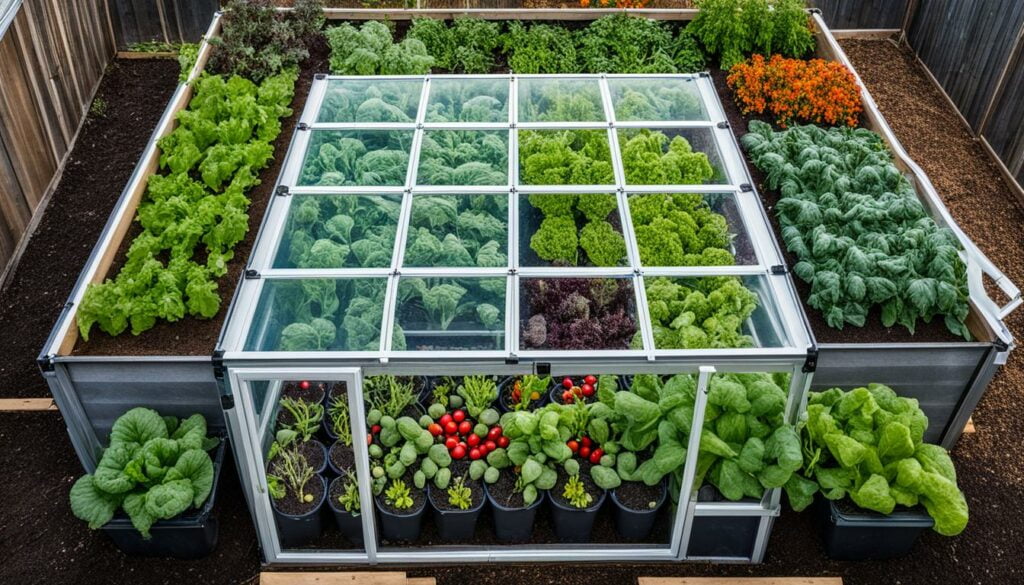
Amongst the roster of cold-hardy veggies, certain varieties stand out for their resilience and enhanced taste when grown in the cooler embrace of winter. Lettuce, for example, not only survives but thrives under the cover of a cold frame, developing a remarkable sweetness post-frost. With the implementation of cold frames in the garden, a quaint, yet revolutionary tool, the extending growing season is not just possible but becomes a tangible reality. The following table highlights some champion vegetables of the winter garden, their preferred cold frame conditions, and the taste enhancements attributed to the colder climate.
| Vegetable | Optimal Cold Frame Condition | Taste Enhancement |
|---|---|---|
| Lettuce | Mild humidity, light frost protection | Sweeter leaves |
| Spinach | Cool temperatures, moist soil | Richer flavor |
| Carrots | Cold soil, low water | Increased natural sugars |
| Kale | Hardy, withstands lower temperatures | More intense color, sweeter taste |
In the golden haze of fall, savvy growers commence their protected cultivation sessions, sowing seeds that promise a harvest even as the snow whispers secrets to the slumbering earth. During the gentle thaw of spring, these very cold frames serve a different purpose, acclimatizing young, tender seedlings to the whims of nature, teaching them the intricate dance of warmth and cold before they can firmly root themselves in the main garden beds.
Yet, the utility of cold frames is not merely confined to the growing of produce; they also offer sanctuary for the storage of robust root vegetables. Be it the crispness of a carrot or the creamy heart of a turnip, these subterranean treasures find solace within the cold frame, shielded from the ravages of frost and freeze.
“Adopt the pace of nature: her secret is patience.” – Ralph Waldo Emerson
In conclusion, cold frames are silent sentinels that stand guard over our cherished flora, playing a pivotal role in extending the growing season and maximizing harvests—transforming the coldest months into a period of growth and abundance.
Season Extension Techniques & Maintenance
As gardeners embrace the joys of cold frame gardening, understanding the nuances of season extension techniques and effective maintenance is crucial for success. Implementing strategies like strategic heating and adept insulation is essential when striving for frost protection for plants and extending the growing season. Below, we delve into these critical components that ensure the vitality of your garden throughout unpredictable temperatures and conditions.
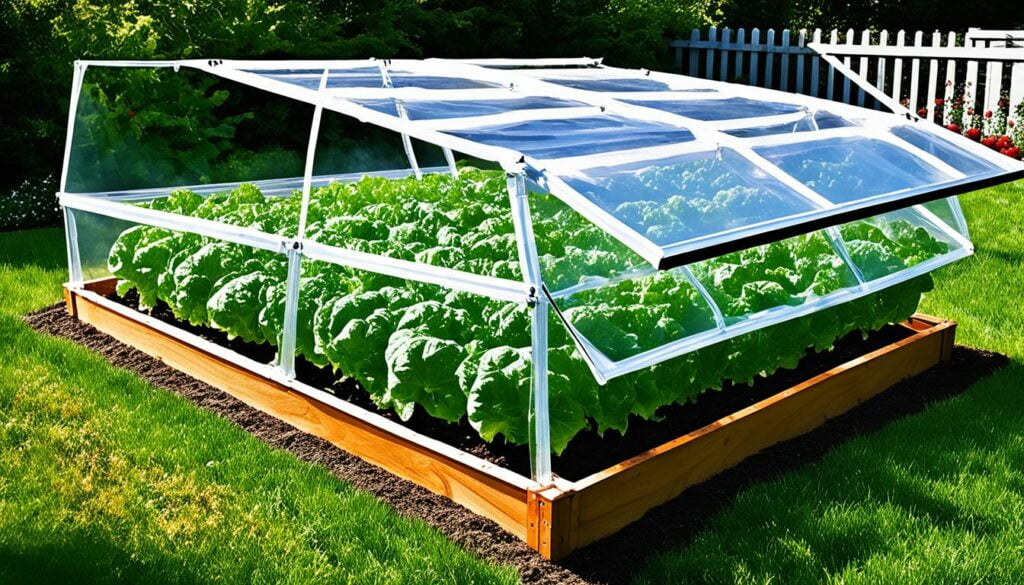
Getting an Early Start: Heating and Insulation Tips
Begin your season with a head start by focusing on heating and insulation within your cold frames. Adding an extra layer of insulation helps retain heat during the chilly nights, giving your seedlings the warm cocoon they need for optimal growth. Consider using materials like bubble wrap or foam sheets to line the interiors.
Protecting from the Elements: Windbreaks and Covers
Defend your plants from gusty winds that can punch through cold frames and swoop away precious warmth. Windbreaks such as shrubbery or temporary fabric barriers can significantly reduce wind exposure, and when paired with UV-resistant covers, they afford an additional layer of frost protection for plants.
A Guide to Ventilation and Temperature Control
Ventilation plays a pivotal role in regulating the temperature inside a cold frame. A well-ventilated space prevents excessive heat buildup, a common culprit for wilting or worse. Manual adjustments to the lid allow a gardener to control the internal climate, or you may opt for automatic venting solutions for peace of mind.
Conclusion
In essence, cold frame gardening emerges as a champion among season extension techniques, allowing avid gardeners to defy the conventional limits of the growing calendar. These ingeniously simple structures pave the way for a vibrant selection of produce, right through the chill of winter, lending winter vegetable gardening a new lease of life. By judiciously selecting the appropriate building materials and understanding the microclimate within these frames, individuals can bask in the joy of cultivating fresh greens and roots despite the frosty backdrop.
The practicality of implementing methods like proper insulation, strategically placed windbreaks, and meticulous temperature regulation highlights the depth of potential greenhouse gardening practices bring into any garden space. Not only does the cultivation process extend well beyond the typical harvest timeline, but it also fortifies the plants against the harsh elements that might otherwise lead to a diminished yield. This methodical approach to extending the growing season stands as a testament to human ingenuity and resilience in agriculture.
As we draw insights from this discussion, it’s clear that the benefits conferred by cold frame gardening are invaluable. They provide not just extended harvest and protection, but they also offer a joyful sense of continuity for those who find solace in the rhythms of planting and growth. Avid gardeners can, therefore, look forward to enjoying a bountiful and diverse array of home-grown vegetables all year round, all thanks to the wonders of protected cultivation.



